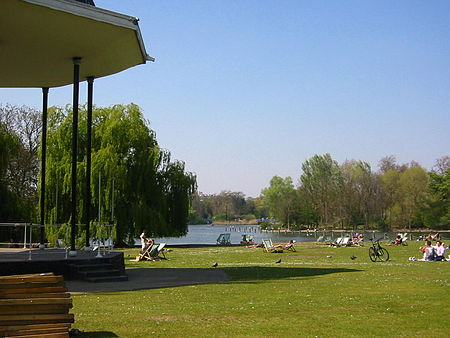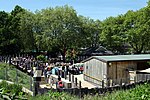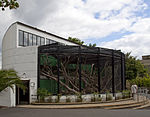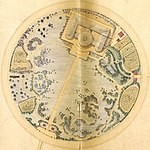Regent's Park

Regent's Park (officially The Regent's Park) is one of the Royal Parks of London. It occupies high ground in north-west Inner London, administratively split between the City of Westminster and the Borough of Camden (and historically between Marylebone and Saint Pancras parishes). In addition to its large central parkland and ornamental lake, it contains various structures and organizations both public and private, generally on its periphery, including Regent's University and London Zoo. What is now Regent's Park came into possession of the Crown upon the dissolution of the monasteries in the 1500s, and was used for hunting and tenant farming. In the early 1800s, the Prince Regent proposed turning it into a pleasure garden. The Park was designed by John Nash and James and Decimus Burton. Its construction was financed privately by James after the Crown Estate rescinded its pledge to do so, and included development on the periphery of townhouses and expensive terrace dwellings. The park is Grade I listed on the Register of Historic Parks and Gardens.
Excerpt from the Wikipedia article Regent's Park (License: CC BY-SA 3.0, Authors, Images).Regent's Park
Outer Circle, City of Westminster Marylebone
Geographical coordinates (GPS) Address Website Nearby Places Show on map
Geographical coordinates (GPS)
| Latitude | Longitude |
|---|---|
| N 51.532222 ° | E -0.156667 ° |
Address
The Hub Cafe
Outer Circle
NW8 7LS City of Westminster, Marylebone
England, United Kingdom
Open on Google Maps








